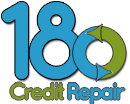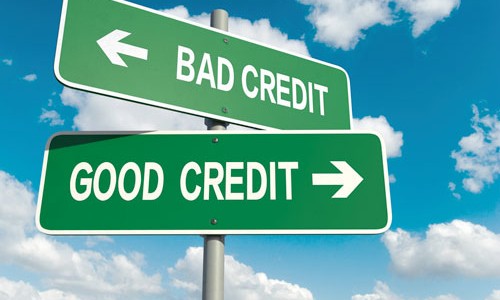Are you working to debt out of debt? Could your credit score use a bit of work? Here are four unique routes to follow to get your credit back on track.
- Repair your credit quickly, make an impact quickly
- Check your credit report for errors. It’s bad enough when things you actually did are hurting your credit score; there’s no need to also pay for things that are on your report in error! Make sure there are no incorrect late payments or delinquent accounts listed. If you find a mistake, call your creditor and explain what’s wrong and how to fix it. When they agree to the change, be sure to get it in writing.
- Set up payment reminders. Your payment history makes up 35% of your credit score. This includes paying bills on time regularly. Setting up automatic payments directly from your account will ensure you don’t miss any.
- Cut your credit card use. You need to get your spending under control if you hope to pay off your debt. Do this by paying for things in cash. You might also ask a family member for a loan to pay off your credit cards, which you’ll repay to them at a much lower interest rate. This could save you hundreds or even thousands of dollars in interest in the long run.
- Don’t cancel your cards. Your length of credit history is a positive aspect of your account, and there are no downsides to leaving an account with no balance open. If you think you might be tempted to use your card, cut the physical card up but keep the account itself.
- Boost your credit score
- If you need to build your credit history, consider getting a secured credit card. This works just like a credit card, except you can only spend money you’ve deposited in advance so you’ll never spend more than you have.
- Become part of a credit union. In the future, they may be more likely to give you loans than a traditional bank.
- Lower your debt to credit ratio. This is the amount of debt you have on each card compared to your credit limit. Ideally, you should aim for a debt to credit ratio of no more than 20-30%.
- Add “good credit” accounts. Things like your electric bill and your car loan are considered “good” accounts and weigh into your credit score. If you can add one or two good accounts and remove just one bad one, you’ll make a big difference in your score.
- Pay Off Your Existing Debt
- If your monthly payments are more than you can manage, call your creditors and see if they’re willing to negotiate. After all, they’d rather get something from you each month than nothing at all. Tell them what you’re prepared to pay each month and that you’re working to get your finances back on track.
- Decide how to pay off your debt. There are two schools of thought about paying down debt, avalanching and snowballing.
- Avalanching is when you pay off your debts one at a time, starting with the account with the highest interest rate. Take as much money as you can afford and put it toward paying off that first debt. When it’s paid, move onto the account with the next highest interest rate, putting toward it the money you were using toward the first account. This approach will save you the most money in the long run.
- Snowballing is when you pay off the accounts with the smallest balance first. This helps create a mental sense of accomplishment early on, pushing you forward to pay off the next largest debt, then the next one.
- Keep two bank accounts: one for everyday spending, the other for paying off debt. Before you even touch your paycheck, split it up into these two accounts. This will force you to limit the amount you spend on everyday purchases throughout the month, because when the money runs out, the account is empty.
- Follow a Budget
- Create a budget. It’s not scary or overly complicated. Lay out all of your fixed expenses each month. This includes things like rent, electric bills and groceries—the essentials.
- Take a look at your last few bank statements to find out where the rest of your money is going. You might break it into categories like ‘eating out’ or ‘entertainment’.
- When you have all of your monthly expenditures filed under either fixed expenses or something else, you’ll need to decide where to cut. A portion of the money from the non-essential expenditures each month should be dedicated to paying off your debt. In fact, this amount should be added to the essential category!
- From what’s left, set a budget for each item, like $50 for going out to eat or $100 for travel.
- Stick to it! A budget is only effective if you dedicate yourself to it each and every month.
By following one of these four strategies or a combination of a few, you’ll have you debt paid off in no time!
debt? Could your credit score use a bit of work? Here are four unique routes to follow to get your credit back on track.
- Repair your credit quickly, make an impact quickly
- Check your credit report for errors. It’s bad enough when things you actually did are hurting your credit score; there’s no need to also pay for things that are on your report in error! Make sure there are no incorrect late payments or delinquent accounts listed. If you find a mistake, call your creditor and explain what’s wrong and how to fix it. When they agree to the change, be sure to get it in writing.
- Set up payment reminders. Your payment history makes up 35% of your credit score. This includes paying bills on time regularly. Setting up automatic payments directly from your account will ensure you don’t miss any.
- Cut your credit card use. You need to get your spending under control if you hope to pay off your debt. Do this by paying for things in cash. You might also ask a family member for a loan to pay off your credit cards, which you’ll repay to them at a much lower interest rate. This could save you hundreds or even thousands of dollars in interest in the long run.
- Don’t cancel your cards. Your length of credit history is a positive aspect of your account, and there are no downsides to leaving an account with no balance open. If you think you might be tempted to use your card, cut the physical card up but keep the account itself.
- Boost your credit score
- If you need to build your credit history, consider getting a secured credit card. This works just like a credit card, except you can only spend money you’ve deposited in advance so you’ll never spend more than you have.
- Become part of a credit union. In the future, they may be more likely to give you loans than a traditional bank.
- Lower your debt to credit ratio. This is the amount of debt you have on each card compared to your credit limit. Ideally, you should aim for a debt to credit ratio of no more than 20-30%.
- Add “good credit” accounts. Things like your electric bill and your car loan are considered “good” accounts and weigh into your credit score. If you can add one or two good accounts and remove just one bad one, you’ll make a big difference in your score.
- Pay Off Your Existing Debt
- If your monthly payments are more than you can manage, call your creditors and see if they’re willing to negotiate. After all, they’d rather get something from you each month than nothing at all. Tell them what you’re prepared to pay each month and that you’re working to get your finances back on track.
- Decide how to pay off your debt. There are two schools of thought about paying down debt, avalanching and snowballing.
- Avalanching is when you pay off your debts one at a time, starting with the account with the highest interest rate. Take as much money as you can afford and put it toward paying off that first debt. When it’s paid, move onto the account with the next highest interest rate, putting toward it the money you were using toward the first account. This approach will save you the most money in the long run.
- Snowballing is when you pay off the accounts with the smallest balance first. This helps create a mental sense of accomplishment early on, pushing you forward to pay off the next largest debt, then the next one.
- Keep two bank accounts: one for everyday spending, the other for paying off debt. Before you even touch your paycheck, split it up into these two accounts. This will force you to limit the amount you spend on everyday purchases throughout the month, because when the money runs out, the account is empty.
- Follow a Budget
- Create a budget. It’s not scary or overly complicated. Lay out all of your fixed expenses each month. This includes things like rent, electric bills and groceries—the essentials.
- Take a look at your last few bank statements to find out where the rest of your money is going. You might break it into categories like ‘eating out’ or ‘entertainment’.
- When you have all of your monthly expenditures filed under either fixed expenses or something else, you’ll need to decide where to cut. A portion of the money from the non-essential expenditures each month should be dedicated to paying off your debt. In fact, this amount should be added to the essential category!
- From what’s left, set a budget for each item, like $50 for going out to eat or $100 for travel.
- Stick to it! A budget is only effective if you dedicate yourself to it each and every month.
By following one of these four strategies or a combination of a few, you’ll have you debt paid off in no time!

